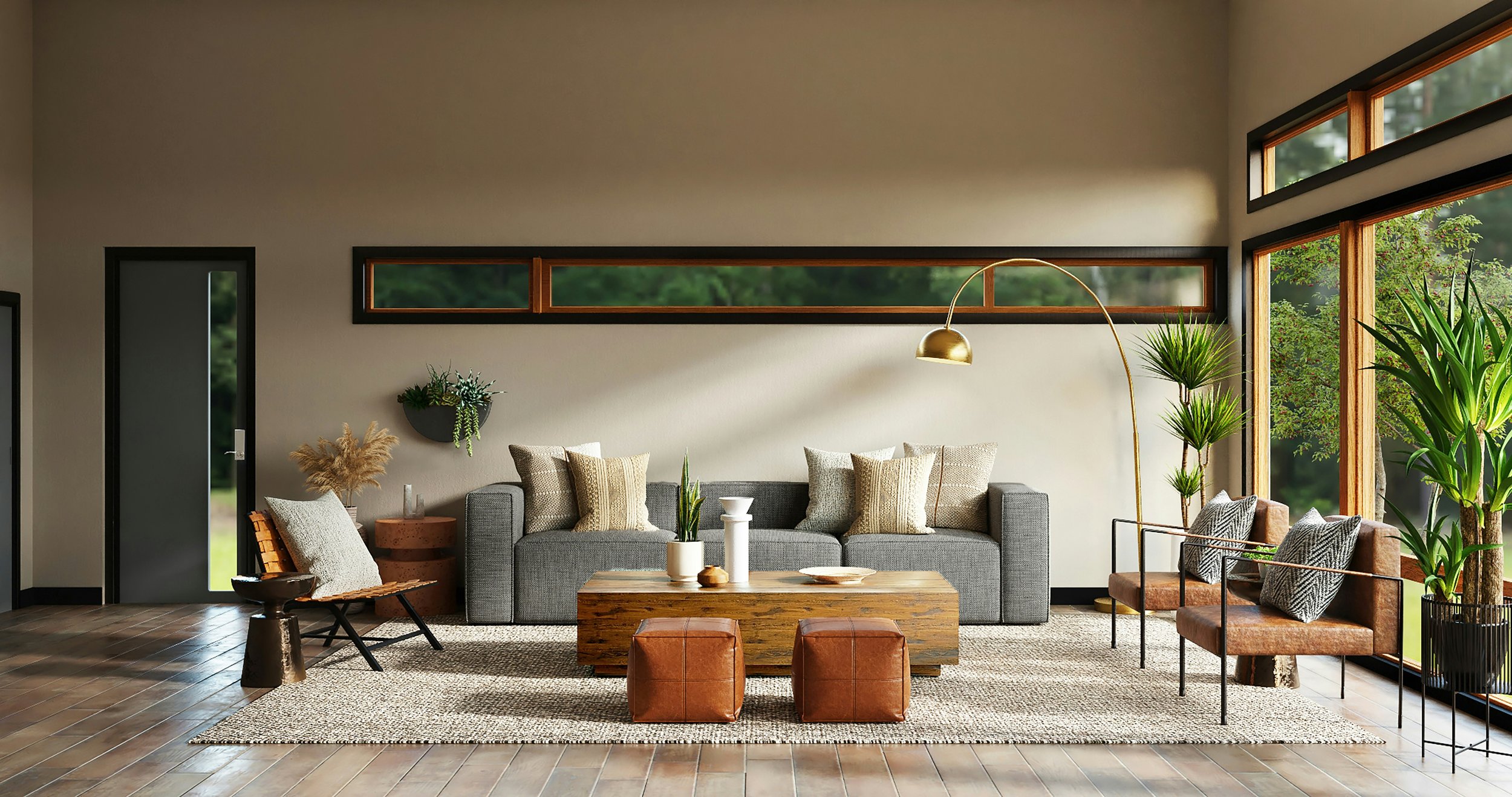The architectural details of a home communicate its character and the people who live there. When plain rooms lack distinction, it is often the subtle elements that can transform them into statement spaces. Windows, in particular, have evolved from purely functional features to design focal points that dramatically alter how a room feels and functions.
Aluminium windows have become increasingly popular in contemporary home design, offering clean lines and slim profiles that maximise natural light. Modern aluminium frames provide the structural strength to support larger glass panels while maintaining a sleek appearance. This combination of form and function allows for striking architectural statements without compromising on performance.
Beyond aesthetics, thoughtfully selected windows influence how we experience our living spaces daily. They frame views, control light flow, and create visual connections between indoor and outdoor environments. When chosen with intention, these architectural elements can turn ordinary rooms into spaces with distinct personality and purpose.
The Aesthetic Impact of Aluminium Windows on Modern Home Design
Once limited to commercial buildings, aluminium windows have now found their place in residential spaces. Their appeal comes from slim sightlines and minimal frames that maximise glass area. This creates brighter spaces with stronger connections to outdoor environments.
Compared to other materials, aluminium offers a fresh touch. While timber frames provide warmth and tradition, and uPVC offers affordability, aluminium balances contemporary style with timeless elegance. The clean lines suit both minimalist interiors and industrial design styles.
The slender profiles of aluminium framed windows allow more natural light than conventional frames. This results in spaces that feel more expansive and welcoming. The added daylight brightens interiors and supports the open atmosphere popular in contemporary homes.
Design Versatility Beyond Standard Options
Aluminium windows provide excellent adaptability to personal style. Unlike the limited colour range of uPVC, aluminium frames can be powder-coated in numerous shades. This supports personalised window designs that match your vision.
Dual-colour finishes provide options for different looks on interior and exterior surfaces. The outer frame can complement the building exterior while the inner frame coordinates with interior decor. This enables continuity with outdoor architecture and blends into each room design scheme.
Frame thickness and glass-to-frame ratios play a key role in the overall appearance. Slimmer frames produce a more current appearance with maximum glass area. Slightly thicker frames can create a more substantial look for traditional homes.
For modern living spaces, aluminium windows work well with smart home systems. Automated opening mechanisms, security sensors, and climate control features can be incorporated into the window design. This brings a sophisticated living environment.
Material Performance That Improves Lifestyle Quality
The material choice in windows directly affects daily comfort. Aluminium windows provide sturdy construction without unnecessary weight. This allows larger panes while maintaining structural reliability, suitable for homes designed for uninterrupted views.
Low maintenance is another benefit. Unlike timber, which requires routine sanding and repainting, or uPVC, which may discolour over time, aluminium resists weathering. Regular wiping with a damp cloth keeps aluminium frames looking new for years.
The durability of aluminium framed windows surpasses both uPVC and timber alternatives. While uPVC can warp and discolour over time, and timber requires regular maintenance, aluminium frames remain structurally sound for decades.
Modern aluminium window systems have resolved previous thermal performance issues. Current designs feature thermal breaks, insulating barriers between inner and outer frame sections. This technology prevents heat transfer, helping homes maintain consistent temperatures throughout the year.
For urban residents, the acoustic insulation properties of aluminium windows create quieter living environments. When fitted with appropriate glazing, these windows can reduce external noise. This turns busy city homes into peaceful retreats.
The British climate presents challenges for window materials. Aluminium excels in its ability to withstand rain, strong winds, and temperature variations typical across the UK. This strength comes from its natural oxide layer, which forms a protective barrier.
Investment Value of Architectural Window Choices
The return on investment for window upgrades extends beyond initial impressions. Aluminium windows provide long-term economic benefits. They combine durability, energy performance, and sustainability credentials that affect both daily costs and future resale value.
While aluminium frames may cost more than some alternatives, their advantages cover more than price. Design flexibility, colour options, and slim sightlines give architects and homeowners freedom in shaping distinctive spaces.
Unlike other window materials, aluminium frames maintain their appearance and structure over time. This consistency supports design intent while resisting trends and daily wear. It ensures the property continues to stand out for both daily living and future resale appeal.
Energy efficiency affects ongoing costs significantly. When professionally installed with high-performance glazing, aluminium windows help maintain comfortable interiors year-round. This reduces reliance on heating and cooling, resulting in lower energy bills.
Quality window installations are increasingly noted in property markets for their visual appeal, longevity, and energy performance. Buyers appreciate premium window upgrades, often associating them with better-maintained homes.
Period Properties and Contemporary Elements
Contrary to common belief, aluminium windows suit period properties while adding modern features. Selecting designs that respect the original architectural character is essential. Slimline aluminium frames can replicate traditional steel windows more authentically than other materials.
Different architectural periods require specific window adjustments. Victorian and Edwardian properties benefit from aluminium sash window designs that maintain period proportions. For mid-century modern homes, larger aluminium casements match the original style.
Balancing heritage considerations with modern performance requirements calls for detailed planning. Conservation areas may have specific guidelines about window appearances. Many aluminium systems now offer period-style options that meet planning requirements.
Creating visual harmony between windows and overall home style comes down to thoughtful design principles. Window proportions should relate to the scale of the building. Frame colours can either blend with the facade or provide intentional contrast.
Attention to these architectural details ensures that windows contribute to rooms with distinct character and improved function. The placement and style of quality window systems determine natural light, visual comfort, and overall atmosphere, shaping the identity of every domestic space.
